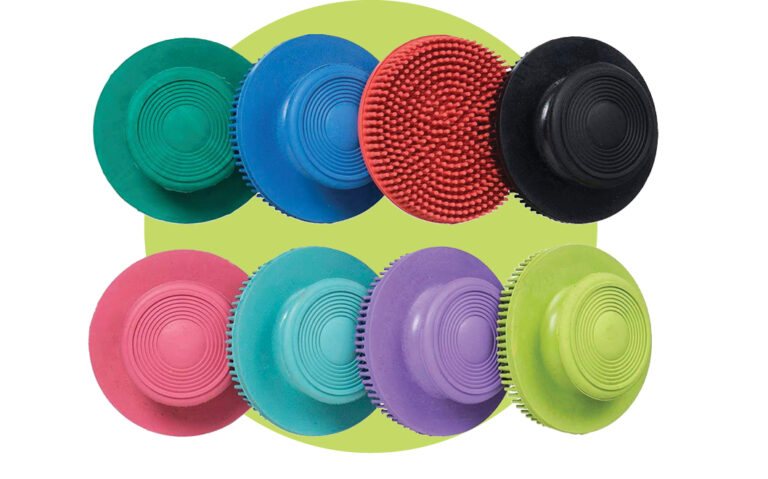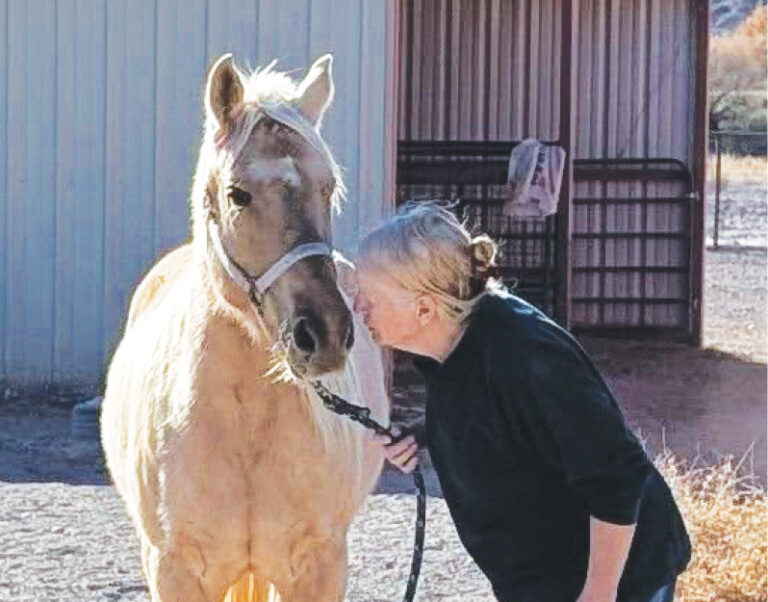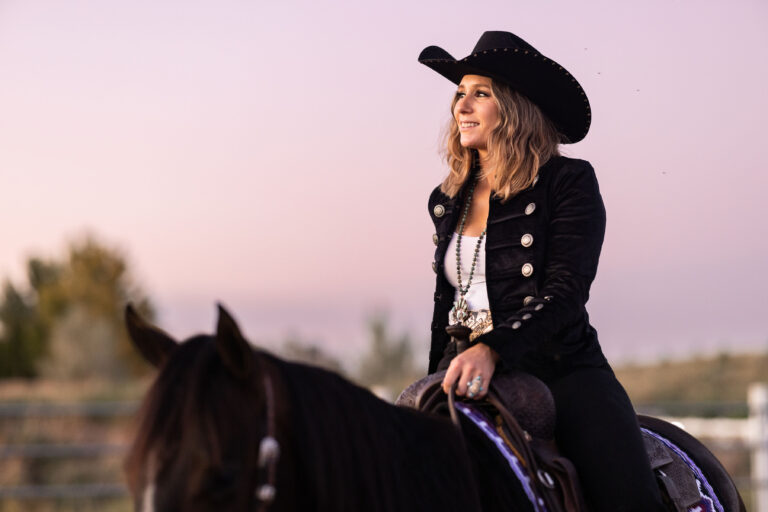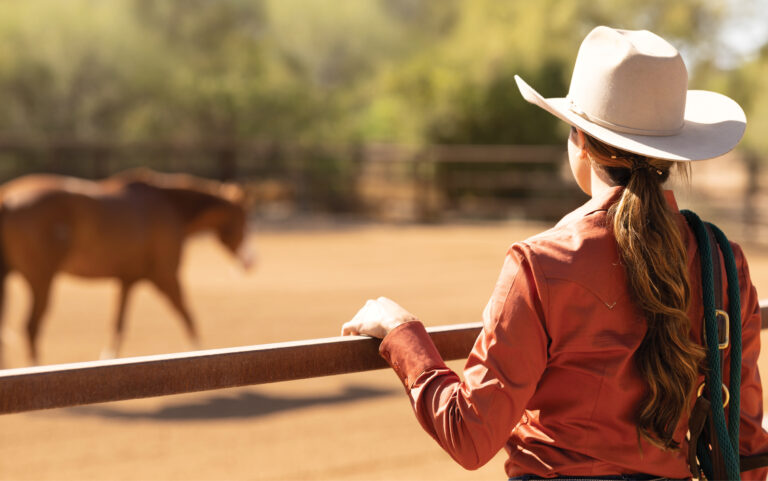In February 2004, I watched a news segment on the plight of “PMU” mares—pregnant mares who were kept in narrow stalls 24 hours a day, hooked to catheters that “harvested” their urine. Their urine was used to produce a medication, but when demand for that medication dropped, thousands of mares were suddenly destined for slaughter.
It was a report that moved me, a 30-year horse owner, to act—and to step out of my comfort zone. I’d never owned a pregnant mare, or an untrained horse. But I was about to.
My husband, Jim, and I contacted the United Pegasus Foundation, a racing organization that helps give California Thoroughbreds a second career, and also rescues PMU mares. The next day, we found ourselves standing next to a pen full of PMU mares, selecting a sweet, 16-hand, 7-year-old Belgian/Standardbred cross named Dolly. She was in foal, so we boarded her at a facility with an experienced staff, and planned to bring her home after the foal had arrived.
We soon learned that PMU mares bring a whole new dimension to equine behavior. The first time we turned Dolly out where she could run and roll, she had no idea what to do. She simply stood where we left her until we led her back to her pen, an hour later. It took her months to take carrots and treats from my hand—she had no idea what they were. The mares at PMU farms are herded, not led, so trying to lead her was like flying a kite.
She foaled early on the morning of May 13. We named her ¾-Belgian filly “Cinnabar,” eventually turning mom and baby out with two other mares and foals at the boarding facility.
We brought the pair home in August, then began to search for a trainer who could help us with them. Dolly was nearly impossible to lead, and Cinnabar was challenging to handle and aggressive at feeding time. After six weeks of calling around, attending clinics, and perusing books, Web sites, and DVDs, I worried I could easily make things worse if I didn’t find the right training approach for Dolly and Cinnabar. I’d begun to learn that many PMU horses have unique behavioral challenges that are difficult to overcome. With increasing frustration and a few false starts, I sought doggedly for someone to teach me how to handle the trials and everyday drama that Dolly and Cinnabar presented.
In September, I attended a clinic that advertised, “Do you need help with your new PMU mare?” The trainer, Shea Stewart of Ben Lomand (near Santa Cruz), California, was working successfully with these types of horses.
I attended the clinic and felt instinctively that Shea’s approach was exactly what I and my horses needed. Shea works to earn each horse’s complete focus, and her gentle approach breaks through the fear and aggression many of the PMU horses exhibit. Her techniques were tools I took home and applied.
After that, working with Dolly and Cinnabar began to be fun. As I gained confidence, I told Jim I might like to get another foal—a playmate for Cinnabar, I reasoned, dreaming of a little black-and-white pinto.
The day before Thanksgiving, we ventured farther down the PMU path when an early Christmas gift arrived: Jim had gone back to United Pegasus (they were getting to know us!) and adopted a 6-month-old black-and-white Percheron-cross filly. I named her Domino. She was basically untouched. As we unloaded her, she took off through the pasture. It took eight of us an hour in the dark to get her into her new pen. She, like Dolly and Cinnabar, had some lessons to teach me.
I spent two weeks letting her get to know me, then began trying to halter her. I was starting from scratch again, but this time, I had some training under my belt, and what a difference it made.
Through winter and into spring, we experienced ups and downs with all three of the horses, and weathered some setbacks and disappointments. When space opened up at Shea’s facility, I sent Dolly, and eventually Cinnabar and Domino, off to “school.” I spent one or two days a week with Shea learning how to handle challenging horses. We all made strides.
I kept a journal of my journey with my PMU girls, and in September 2007, I wrote, “Now, I get to start riding!”
Until that point, it seemed I’d been traveling this path in a series of starts and stops, with none of us moving in the same direction at the same time. Finally, after 3½ years, we were all moving forward.
Working in the round pen has been the most difficult method for me to master—but one of the most valuable. I’ve learned that it’s a conversation I’m having with my horse, and it’s been a confidence-builder for all of us. Dolly has learned to trust, and I’ve learned how to work with Cinnabar’s strong opinions. It was a challenge to get Domino to move forward or backward, but now she leads well and moves with me.
When I first made the decision to adopt a PMU mare, I simply wanted to help give a horse a happier home. Along the way to that simple destination, however, I found my own feet as a horsewoman.
Robin Stepp lives in Latrobe, California, with her husband Jim and five horses, two mini-donkeys, four dogs, and four cats. Her herd includes Sonia, a weanling Morgan filly she recently brought home. “Where Cinnabar was my Mack truck, Sonia is my sports car,” says Robin, adding that her lessons with Shea are paying off with the newest addition, too.






